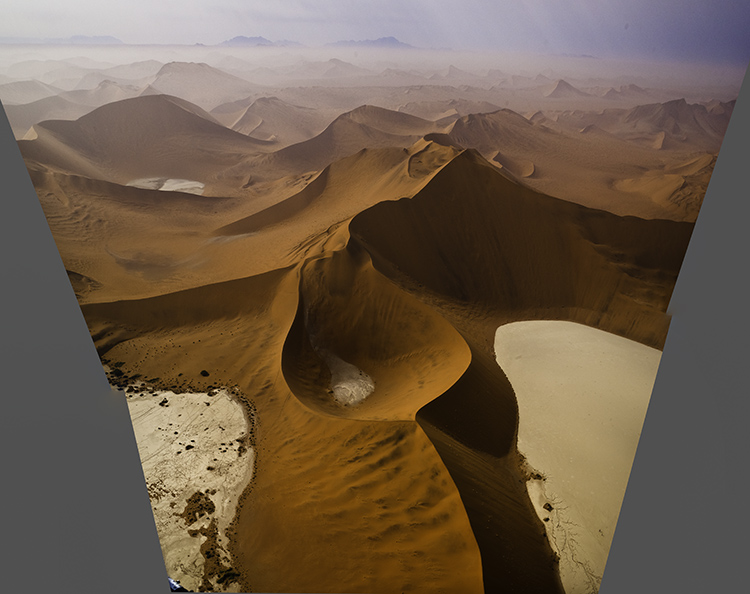Can I Take an Image and Distort It to Use It Again
4 Ways To Crop Your Images – Crop, Distort, Retouch

Deciding what's in the frame and what's out is a disquisitional decision that can brand or intermission an epitome. Y'all can look at it very simply. What is an paradigm of? What is an paradigm not of? And how does what's left over support or distract from the essence of an image?
In the past we had two uncomplicated options; one, apply the frame to crop; two, crop when printing or post-processing. At present we take two more options to think well-nigh; three, distort; 4, retouch. Each of these offers different possibilities and becoming familiar with them all will assist you lot choose.
Information technology's a new mindset. Once yous learn to see in these new means, you'll notice y'all'll make images that yous previously passed by, leaving them unmade or even unnoticed. Equally a upshot, you'll make many more successful images.


Classic crops eliminate the most information
Crop
You lot've got choices. Choose wisely.
One – Crop Before Exposure
Use the frame to eliminate distracting information effectually a subject(due south). Take actress care with prototype information that touches the frame, as it volition draw extra attention. If part of an object is eliminated by the frame make certain what's left looks deliberate - just a sliver lopped off or a sliver left over seems careless. In one case you've made your exposure, you're committed. You can crop more than but you can't uncrop. When in dubiety, shoot both tight and loose.
Two – Ingather After Exposure
Shoot loose (more than you need) and you'll preserve your ability to refine a composition during postal service-processing, testing, and comparing many variations, fifty-fifty over extended periods of time, before settling on a final solution. Doing this volition take more fourth dimension only you will gain precision.

Distorted to fill up the frame
Distort
Distorting photographs is widely practiced. But well-nigh photographers tend to think of their limited utilise of baloney every bit having produced no distortion. In fact, every lens distorts in its own manner, some more others, similar wide-angle lenses. Lens profiles are designed to right for lens distortion during post-processing by 'undistorting'.
Many people think they aren't distorting their photographs when in fact they are doing information technology on nigh of their images in multiple means, first past using a lens, 2nd by using a lens profile, and sometimes third by creating panoramas. Why are these practices more acceptable than using distortion and retouching as a part of your cropping practices? In the stop, it's your option.
You can push button one or more sides of an image outside its frame and achieve similar results to cropping. What'south different here is that the proportions of the objects and spaces left within the frame will modify, typically getting taller or wider, usually simply a piddling but potentially a lot.
You lot've got options. Test them before y'all settle on your final solution.
One - Transform
Use Photoshop's Edit > Transform to distort an image uniformly. To motility an unabridged side, hold the Shift key to motility 1 side without moving the others. And/or, to move one corner independently, press the Command fundamental before moving a corner indicate.
(To practice this an image's Groundwork Layer needs to be a Smart Object or a duplicate layer.)
2 - Content-Enlightened Scale
Utilize Photoshop's Edit > Content-Enlightened Scale to distort an image non-uniformly – smooth areas volition aggrandize or contract more than textured areas. Pull the areas yous wish to crop outside the frame. Hold the Shift primal while you're doing this if you lot wish to alter one side more than another and the image's aspect ratio with it.
(Practise this on a indistinguishable layer. Content-Aware Scale doesn't work on a Smart Object.)
3 - Warp
Want more localized control? Try Warp. (Edit>Transform>Warp) Warp gives you a filigree to arrange more points with. It adds the ability to modify the position of elements not simply with the edges but besides the insides of the frame. Do this on a indistinguishable layer or indistinguishable Smart Object. Warp works on Smart Objects just since it is non a filter so you tin't go the hereafter flexibility of a Smart Filter.
Four - Liquify
You can apply the Liquify filter to distort small portions of an image. For instance, moving something in the heart of the edge of a frame off frame without moving the corners. To do this, go to Filter>Liquify, start with the first tool Forward Warp and utilise the castor to get the upshot yous desire. It'southward worth exploring the other brushes too as Liquify is a powerful distortion tool.

Distorted to fill up the frame
Distorted version with attribute ratio inverse afterward

Preserve Or Adjust Aspect Ratio
Both cropping and baloney may or may not change an paradigm's aspect ratio (the proportions of the frame). Cropping tin be gear up to preserve a set up attribute ratio just this puts limits on what's possible as at to the lowest degree 2 edges, if not all, are adjusted together. if you adjust 1 edge separately from the others you'll change the attribute ratio, for improve or worse. But if a specific aspect ratio is of import to you (either because the original creates consistency betwixt images or because a new ratio is more expressive), after cropping yous can misconstrue the entire frame to the aspect ratio of your choice.
Source: https://www.johnpaulcaponigro.com/blog/39819/3-ways-to-crop-your-images-crop-distort-retouch/
Postar um comentário for "Can I Take an Image and Distort It to Use It Again"